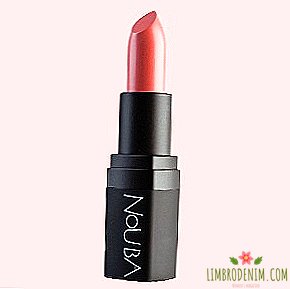How to create a fashion brand: Tips for beginners
Launch and keep afloat its own fashion brand in Russia - not an easy task. Firstly, there are practically no decent educational institutions that could compete with respected Western counterparts: education in the field of fashion as a phenomenon is in our country in its infancy. Secondly, it can be problematic to enter the market and establish sales through stores: the overwhelming majority of domestic retailers work on sales terms, which means that the designer can make a profit, and can be left with nothing.
Finally, as the unpleasant stories of Asya Malbershtein and Oh, My showed, business in Russia is still often conducted using schemes from the 1990s: there is no guarantee that your brand will not be in the hands of an unscrupulous business partner or that large fashionable department store does not owe you more than a million rubles. However, these difficulties are not able to cool the heat of those who want to launch their own clothing brand: new Russian fashion brands appear every year with an enviable constancy.
If the fame of Gosha Rubchinsky and Vika Gazinskaya does not give you peace of mind, tell you what to do to establish your own designer brand and make it commercially successful. Our rules are not universal and do not give one hundred percent guarantees of success, but they will definitely help to understand the basic things.

Understand what you want to do, for whom and why
The first thing you need to decide if you decide to embark on the path of a fashion designer is the concept of the future brand, its identity and how it will differ from the thousands of existing analogues. “The concept to shoot something down and just like that is fundamentally wrong,” said Denis Yerhov, the founder of Items, “I’m sure you need to answer important questions to yourself before shooting a collection and shooting a book. Where can you sell it?” Who is your target customer and is there anyway? In fact, preparation for launch is the most difficult and important process. Based on the responses received, you can already create a product and shoot a book.
“Most of our girls and boys make collections simply because they want to express themselves,” says Dasha Samkovich, creator and designer of the brand I AM Studio. “But if you decide to make clothes that will be worn, you need the collection to be understandable not only to you, but also to people with your vision of fashion. Decide on your goals: for you your own brand is just a tool for creative self-realization, in which third-party investors can invest, or a full-fledged business project? If you decide to make a commercial product, that is, clothes for men, it is important to understand who your target audience is, her age, social status, financial situation - this will be your starting point. "


Assemble the team and find the production
If you seriously plan to engage in the development of your own brand, and not just sell dresses sewn on knee through Instagram without qualified personnel - nowhere. First of all, you will need to find people who can sew your collection: cutters, seamstresses. You can go to the existing production, which cooperate with novice designers, but in this case, the return from the team will not have to wait.
“I made the first collections on third-party production: if you cooperate with them twice a year for a couple of months while the seasonal collection is being prepared, this format is often more profitable,” designer Zhenya Kim shares her experience. “Over time, I began to recruit my own team: looking for the most competent people and luring them to me. In this scheme of work there are a lot of advantages: you cooperate with people who are involved in the process as much as possible and in their interests to do everything qualitatively. On the other hand, it can be expensive if you do not have regular customers or stores for which you need to remove things. "
“If you have a goal to produce large quantities of clothing, you need a so-called experimental workshop: a designer, a tailor and an order manager are the minimum you can start with,” says Dasha Samkovich. “The easiest way is to contact one of the companies , which offer the development of a collection from scratch: you bring them sketches, fabric, they make the design, you come to the fittings, you approve, you get the finished product. Sometimes these companies even help with the placement of copies - now the beginning designer is it's easier to run your own business than even five years ago. "
"It is important to understand that the fashion industry is a team game, and here the team members, professional environment and the support of excellent fans are vital," designer Lyudmila Norsoyan says. "And the team, and partners, and customers, all need to be carefully and carefully raised over the years, getting stuck in place. Emotion, attitude, loyalty, reliability - a terrible shortage in the world of fashion, namely the ability to these emphatic qualities and makes it possible to build around him faithful companions. "

Remove a good lookbook
You have a ready-made collection, your potential hit, the next step is to remove a presentable lookbook, which you can send to print or online publications and show to buyers of stores. Not everyone pays proper attention to the preparation of a lookbook, but in vain it’s not just image-related images, but a PR tool: the more beautiful the images are, the more likely they are to want to be published. At the same time, we must not forget that the lookbook is not equal to the campaign, that is, photographs should present clothes in the most advantageous form, and not just be a creative outlet for the designer and his team.
“It’s important to remember that high-quality lookbook is a clear lookbook,” says the founder of Picls, Sveta Muller. “If we talk about the availability of pictures, then obviously buyers and buyers should first see the clothes, all its details and the texture of the fabric - we should give the maximum information about a thing to a person who does not hold it in his hands and does not have the opportunity to try it on. A quality lookbook is essentially the same good catalog, just with a more interesting concept of shooting and, as a rule, a limited number of photos. what uzhno: technically talented photographer who knows how to work with light, and a talented stylist who is not your zavedet lukbuk in the wilds of creativity in the shooting. "
When asked whether it is worth saving on the book, the answer will be rather negative: after all, it is an investment that will help recoup the costs and bring the brand to a high level. “The main mistake of young brands is to shoot with friends,” says Muller. “Okay, maybe it works if you are from the industry, and your friends are from Condé Nast. But in general there are no options. Just believe, because many Picls customers came to us just after such an experience with a broken heart and hope for a normal shooting. You can save on anything - shoot at home and with natural light. Call a friend who has a camera like he has, because he travels so much. Invite be a model friend who will do her own makeup (like It seems to be) and styling. You will have fun and hide your bow book deep in the table. After all, industry professionals are not just doing this - they know how to do it better than anyone else, they won't let your concept crumble and do everything on your knee. filming, but I advise you not to waste your time. "


Make sure your brand is known.
An urgent question for anyone who has decided to associate their lives with the creation of clothing: how to make them know about your brand, begin to speak and write in publications? The most obvious way is to collect the email base of all the fashion publications on the market and start methodically sending them a lookbook and press releases. There is no guarantee that a conditional Vogue will write about you from the first season, but if you are ready to offer a truly high-quality product, the chances increase. Usually in Russian gloss the popularity of one or another character follows the principle of a chain reaction: as soon as some authoritative publication writes about a new designer, then publications in other similar journals will follow in a string. If you have a couple of tens of thousands of extra rubles, you can hire an agency that will engage in public relations from and to: writing press releases, talking to the press, finding potential customers, and so on. This is a scheme worked out by generations, which, nevertheless, is not the only effective one in modern realities.
“I would not advise hiring an advertising agency if you are a novice designer without large budgets,” says Dasha Samkovich. “First of all, get a nice Instagram where you’ll upload photos of your collections, talk about them, show what’s what to wear and broadcast through the brand philosophy account, share pictures that inspire you. " “Today, almost everything went online, and high-quality SMM plays a much more important role than 15 beautiful pictures from the collection on the brand’s website, online or in print,” Sveta Muller confirms. “In the end, any young novice brand needs his creation sell. And there is a big difference between simply showing things beautifully and showing how to wear these things in real life. The simplest example is the reaction of users of social networks to a photo from a lookbook and street style photo in the same way - it is always more popular f from, provoking real sales, not just admiration for the picture. "

Start selling items
Firstly, it is useful to say that in the total digital era, all the worked out schemes for unwinding one’s own name and selling clothes cease to be absolutely categorical. In fact, you can not at all set the task to enter existing retail sites, but simply create a separate Instagram account, which will be at the same time your PR tool and online store.
However, the notorious SMM is not an imperative for a young brand. Many young designers, who have already earned a name for themselves, still spend a lot of effort and time to sell themselves in large multi-brands and concept stores. “We’ll be launching our own online store just now,” says Zhenya Kim. “Firstly, I didn’t feel it was necessary before, and secondly, soon I plan to do regular collaborations with artists and other young creative people and I want to sell these collections through my site. From the very beginning I had a goal to go to the coolest retailers, I never wanted to sell my collections through Instagram, it seems to me unpresentable. "
"There is no single strategy in finding the right retailer - it strongly depends on the product. Some brands can be recommended to start selling through their own store and exclude wholesale sales, - Denis Yerhov advises. - If you understand that the goods need to be sold through retailers, then it is more efficient to start cooperation with more image projects and gradually expand distribution through smaller and simpler ones. If you see the prospect in large projects, then look for contacts of buyers, in smaller projects often the same the person is the owner, the director, and the buyer. Look for personal contacts, if it doesn't work out, go to the store and show the finished things. It’s better to arrange a meeting in advance by writing to the post office. If you haven’t answered, don't worry, maybe the letter is lost It is worth sending a reminder. "You were not allowed in the door, climb into the window" - contact another person, but you shouldn't sell too aggressively either - nobody likes that! "
If you wish, you can get to any site - it all depends on how interesting and potentially commercially successful the project you are ready to offer. As the former head of the PR department at Tsvetnoy department store, which presents many Russian brands from ZDDZ to Sorry, I'm Not, Pasha Bobrov, "the department store team always carefully looks at all new collections, paying attention to the quality and relevance. Assortment of the department store often replenished with things of Russian brands, both those whose names are already well-known and young. Many new Russian brands come to the store themselves, send for review books and samples. "
Being involved in cooperation with third-party stores, be prepared for the fact that you will have to put up with conditions that are not always favorable for you: young designers and small brands of retailers, as a rule, have a special conversation. “The steeper the store, the worse the conditions, but the presence in the top stores for any brand is extremely important,” says Denis Yerkhov. “If we talk about the foreign market, then most stores buy things, so many designers dream of a foreign market. In Russia such cases are rare, but again everything depends on the product. The steeper the product, the more chances to push through its conditions, especially in cases when the store itself enters the brand. "
The overwhelming majority of stores in Russia work with young brands on the terms of sale - this means that the designer gives up their belongings without a pledge, and the store pays for it with the fact of selling things, usually at the end of each month. To many, such a cooperation option does not seem to be the most beneficial: if for some reason the store could not sell the collection before the end of the season, the designer simply gets it back in his hands.
“In fact, implementation often turns out to be a more profitable history for both parties,” says Denis. “First, the mark-up (markup on cost. - Approx. Ed.) in the implementation-based relationship is always higher than in the buyout, that is, the brand gets more money. Secondly, in the case of good sales it is almost always possible to sort the goods, that is, to add what has already been sold, or additional models. On the implementation, as a rule, orders are bigger and wider. In the case of redemption, the shops are rarely sorted, and even if everything is sold, they will wait for the next season, so theoretically it can be sold much more under sales conditions, if there is a possibility. It is important, before agreeing to cooperate with a particular store, to familiarize yourself with the contract, ask around from other designers who have already collaborated with this project, because, unfortunately, there are a lot of unscrupulous stores on the market, who often do not pay designers due for goods sold ".
Photo: J.Kim, KM20, I am Studio, More, Braventru





